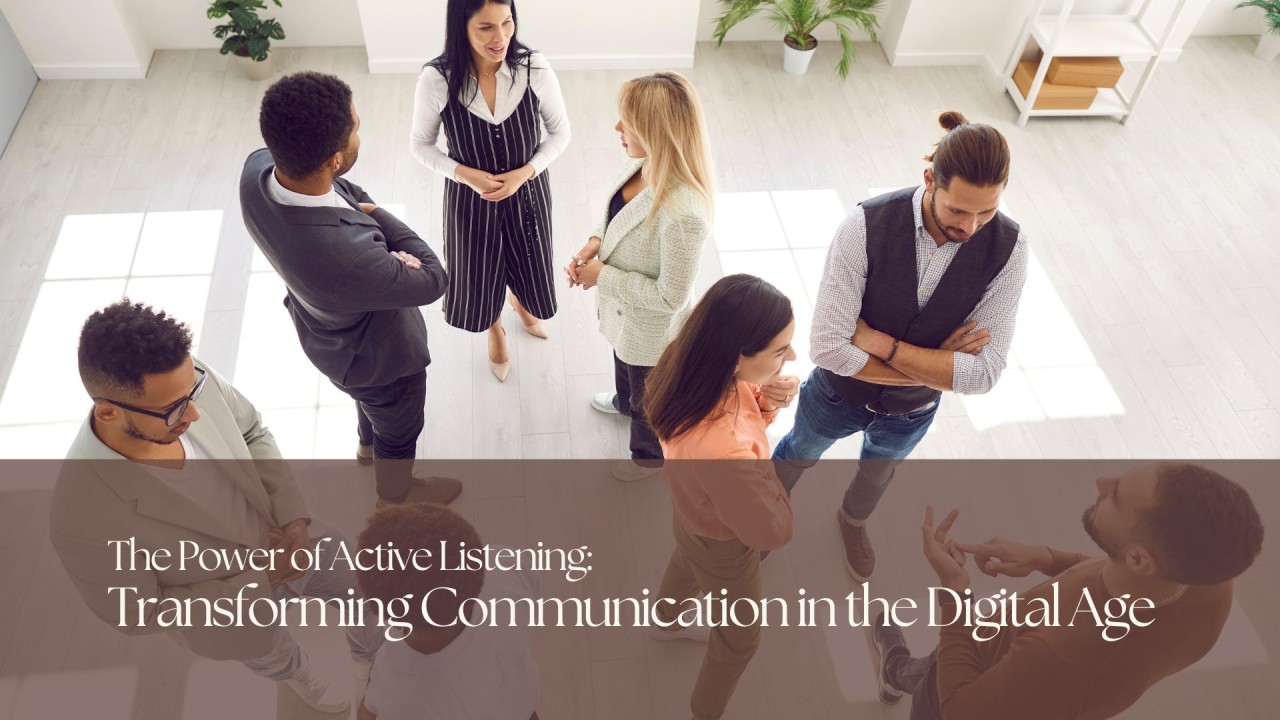In today’s fast-paced digital world, where information is abundant and attention spans are short, effective communication has become more critical than ever. We often find ourselves caught in a whirlwind of emails, messages, and virtual meetings, trying to make our voices heard. But amid this constant noise, one essential skill is often overlooked: active listening.
What is Active Listening?
Active listening is more than just hearing words; it’s about fully engaging with the speaker, understanding their message, and responding thoughtfully. It involves being present, both mentally and emotionally, during a conversation. This means setting aside distractions, withholding judgment, and focusing on the speaker’s words, tone, and body language.
Why Active Listening Matters
In an era where communication is dominated by quick texts and brief emails, the ability to truly listen can set you apart. Here’s why:
- Build stronger relationships: Active listening fosters trust and mutual respect. When people feel heard, they’re more likely to open up, leading to deeper and more meaningful connections.
- Find more efficient solutions: By listening attentively, you can better understand the root causes of issues, leading to more effective solutions. It allows you to consider different perspectives and approach challenges with a well-rounded viewpoint.
- Increase productivity: Miscommunications are costly. By listening carefully, you can avoid misunderstandings, clarify objectives, and ensure everyone is on the same page. This leads to more efficient workflows and better outcomes.
- Encourage collaboration: In team settings, active listening promotes a culture of inclusivity. It ensures that all voices are heard, fostering a collaborative environment where everyone feels valued.
- Improve emotional intelligence: Active listening enhances your ability to empathize with others, making you more attuned to their emotions and needs. This not only strengthens interpersonal relationships but also enhances your leadership capabilities.
How to Practice Active Listening
- Be present: Eliminate distractions. Put away your phone, close unnecessary tabs, and focus solely on the conversation at hand.
- Show empathy: Acknowledge the speaker’s feelings and perspectives. Phrases like “I understand how you feel” or “That must be challenging” can go a long way.
- Ask open-ended questions: Encourage deeper conversation by asking questions that require more than a yes or no answer. This shows your interest and helps clarify the speaker’s points.
- Paraphrase and summarize: Reflect back what you’ve heard by summarizing the main points. This not only confirms your understanding but also shows the speaker that you’re engaged.
- Provide feedback: Give thoughtful, relevant feedback that adds value to the conversation. This could be in the form of suggestions, insights, or simply acknowledging the speaker’s viewpoint.
Conclusion
In a world where everyone is eager to speak, the ability to listen is a rare and valuable skill. Active listening is not just about communication; it’s about connection. It transforms ordinary interactions into meaningful exchanges, paving the way for stronger relationships, better collaboration, and more effective leadership.
By practicing active listening, you can elevate your communication skills and make a lasting impact in both your personal and professional life. So, the next time you’re in a conversation, remember: don’t just hear—listen.

